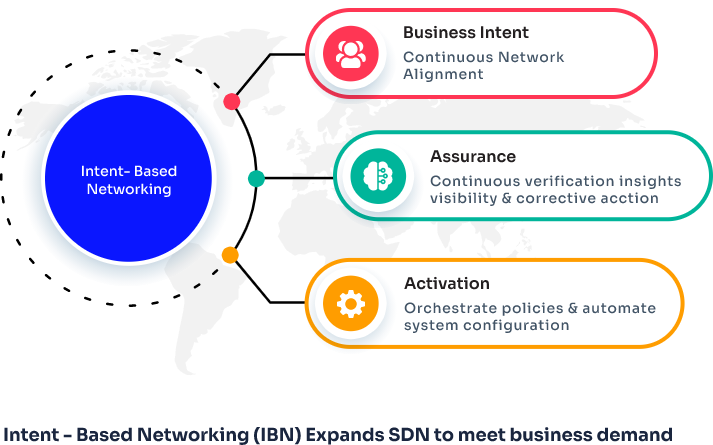Plainly put, your network exists to connect your people and devices with applications to run your business. Simple, right? Not anymore. Networks are getting more complicated and more vital every day. In this digital age, your network has to become ultra-flexible and keep up with changing business needs, a growing number of mobile users and devices, and applications that are distributed across private data centres in public clouds. Plus, you have to forth the growing array of cyber-attacks all the while supporting business agility and delivering a consistent and reliable user experience. Sounds like a big task, but not too big for an intent-based network that uses automation and AI to continuously align the network to business needs.
35% Plans For Their Network To Be Intent – Based Across All Domains By 2022-Up Form Just 4% In 2019.
CISCO, 2020 GLOBAL NETWORKING TREND RESPORT
To connect users, you have to go through several unique network domains: the campus, and branch access network, the wan network and the data centre, and the multi-cloud network, each with its own set of operating rules. By applying an intent-based networking model across all domains, the network can set itself up to do whatever your organization needs consistently between any user or device and any application anywhere automatically.
So, what does this mean in real life? Say you deploy security cameras through a cloud-hosted app and allow security personnel to view feeds only on-prem. You’d need to isolate the cameras, enforce access controls across all your locations, and protect the video across the WAN. Setting up your network manually just to accomplish this one task could be time-consuming and error-prone.
Now imagine having to enforce such policies for all your users, devices, locations, and applications. But what if you defined policies in this case, access, and QoS once and all domains shared and enforced the rules themselves. Now the video will be protected from snooping and would flow smoothly only to the security staff. So, it’s no surprise that today, half of the network professionals recognize
network automation as a critical requirement for ensuring continued service and performance during a disruption.
Intent-based networking eliminates the manual network configurations and inputs that many companies still use. An intent-based networking system allows an administrator to send a request that the network will automatically respond to. This avoids laborious manual coding of action sequences to cope with specific scenarios. Instead, the admin states the desired outcome (e.g., service level), and the intelligence of the system then decides how best to meet it. Intent-based networking also allows an IT generalist or even business owner to define outcomes by specifying their intents, without having to rely on an IT specialist to manually provide inputs every single time.
IBN has emerged to expand on SDN with translation, activation, and assurance elements.
- Translation refers to dynamically translating business requirements “intent” into network policies that can be activated network-wide.
- Activation refers to creating policies and automating systems configurations.
- Assurance refers to AI-enabled network and service assurance capabilities.
With the assistance of artificial intelligence (AI) capabilities to all three elements, the network will be able to dynamically adapt, whether to network disruptions, security threats, or changing application and business requirements.
Capture business intent, translate to policies, and check integrity
Translation

As Brad Casemore, an IDC analyst puts it, “we need to move beyond thinking of networks as agglomerated piece parts, and instead think about them as comprehensive, flexible, intelligent systems that can enable and facilitate desired business outcomes”.

